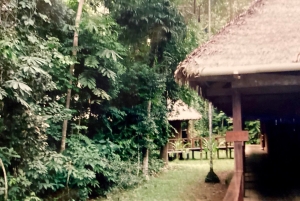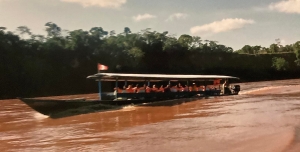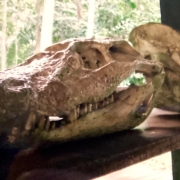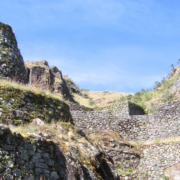Travel Bites: Amazon chill, Lima vultures
Tambopata River, Puerto Maldonado, Peru
IT’S cool down in the jungle. Yes, cold. In the Amazon. But apart from the bizarre temperature for an equatorial jungle, it’s most of the other things you’d expect.
It’s isolated, remote, dangerous, poverty-stricken, primitive, environmentally threatened and scary. It’s also beautiful, diverse, enlightened, even mystical. And it’s sultry.
Cool but sultry. That wonderfully evocative description that takes in leaves so dripping in condensation you’d swear it’s raining, dark thatch huts and hammocks, jungle bars with sour cocktails in sweating glass tumblers.
And it’s also full of nocturnal screeching by unknown species, howler monkeys bellowing in foliage high overhead, deadly bushmaster snakes, leaf-cutter ants and terrifying stinging trees to which adulterers are condemned.
That’s not to forget brilliantly-coloured macaws and toucans, giant river otters, piranha, naked children playing on riverbanks, shamans growing psycho-tropic drugs, riverside gold-mining operations from makeshift canoes, alligators, jaguars, tapirs, parrots and more parrots, waterways that rise 12 metres and more in flood.


Lima, Peru
VULTURES. Last thing I expected. And haze. Thick, enveloping haze. Like a bushfire approaching. Thick, close, under-your-shirt haze. Creeping in like a London pea-souper.
Except this isn’t London. It’s Lima, Peru, just a few degrees south of the equator. It should be steaming, hissing, like a busted boiler valve. Instead, the temperature’s a mild mid-20s Celsius. Balmy.
And the setting sun – slumping lazily into the vast watery desert of the Pacific – is a warm, gilded disc, all fuzzy, indistinct, at the edges. A gently vanishing glow, hardly a sunset proper.
Adjudicating over this trick of nature, from the vantage of San Domingo’s steeple, is the wizened black vulture, Coragyps atratus, with a basilisk eye.
Breathe in. The warm jet-stream rising west of Chile; the abused children’s fate adorning the billboards of this confused, for years even train-less city; the demonic Christian conquistadors of Spain and their legacy ever-present … all are considered under the withering eye of the vulture; cousin of the native Quechuans’ chief totem, the condor.
And the sunset’s fogged, blotted. Warm, soaking, otherworldly. As if like Peru and its history, perhaps its future, it too has been forgotten by the Fates.



